
New releases
A smarter, simpler Attentive
Explore new features →
Explore new features →
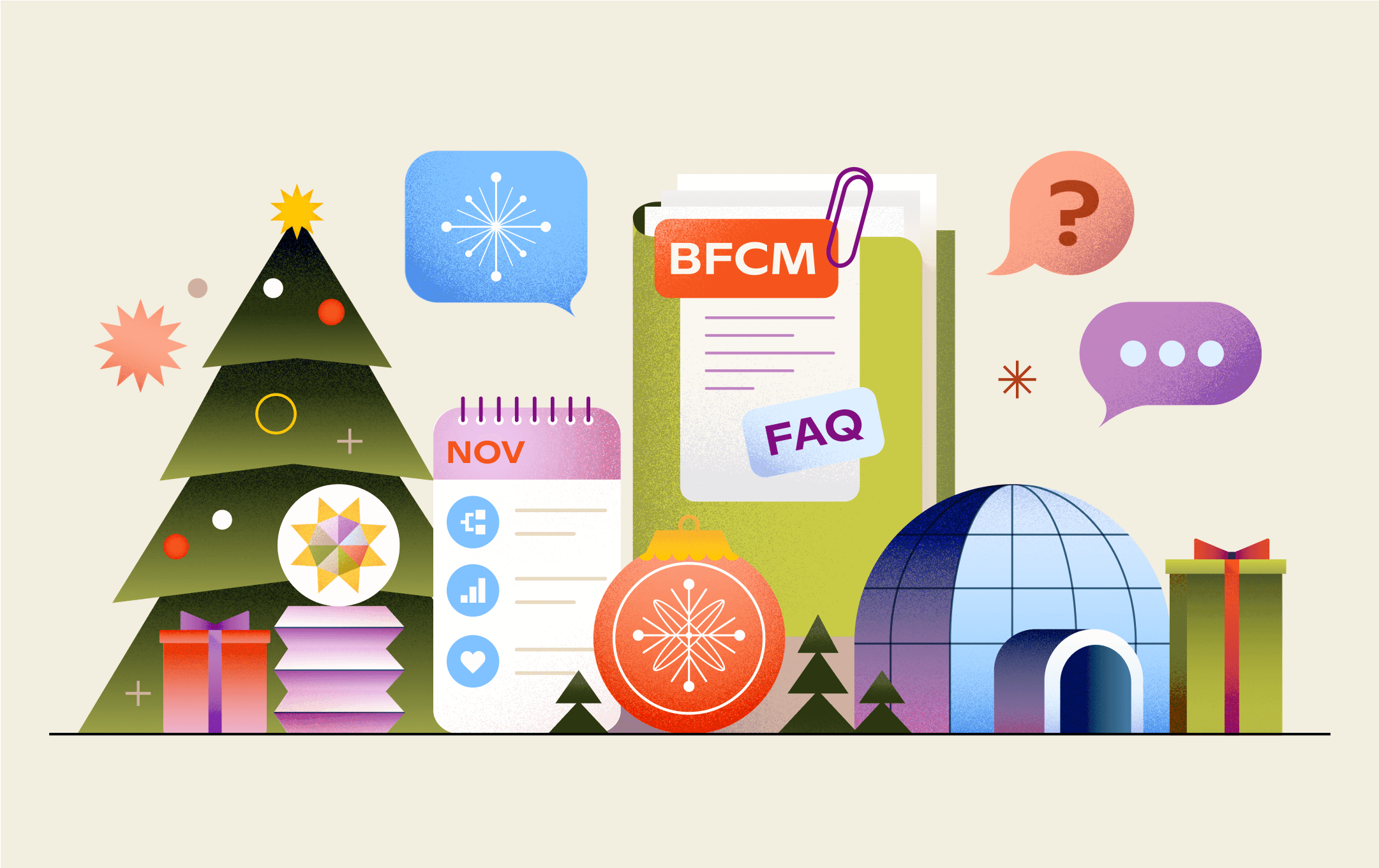
Get inspiration for your holiday planning by browsing BFCM examples, message templates, and more in our Complete BFCM Archive.
Thirty days to Black Friday, Cyber Monday starts now. Most of your campaign plans are locked in and ready to go. As the anticipation builds for another holiday season, marketers have had a lot on their minds, and rightfully so.
Port strikes gave way to uncertainty around the supply chain. The US election season has had marketers questioning the potential impact heading into the holidays. This will be the shortest holiday shopping season in the last few years. And that puts a lot of pressure on brands to knock this BFCM out of the park.
Whether you’ve already wrapped up your holiday marketing calendar, or are still finalizing your plans, we’re answering the top questions brands have about this holiday season so you can feel prepared going into the biggest shopping period of the year (even if it’s already started).
The good news is that the election isn’t going to have as much sway on shoppers as we originally thought. According to our recent consumer survey, 80% of consumers want brands to text them about deals despite the election noise.
With that being said, there are a couple of tips we’d like to share as we get closer to election day.
Don’t let political noise scare you off. Keeping in touch with your subscribers will help you stay connected. Remember, personalized and targeted messages can effectively cut through the noise of political advertising.
To maximize your list growth now, you need to promote your SMS and email programs across all your marketing touchpoints. Make sure to include the value they’ll get from both channels, whether that’s exclusive content and discounts, or early access to shop.
You can also try more gamified growth strategies. For example, swap out your regular sign-up units with Spin-to-Win to give your customers a fun new way to opt in. Or activate display rules, such as exit intent, to control when and where you’ll show your sign-up units. This is where a Countdown Timer can pull customers back in and help create a sense of urgency.
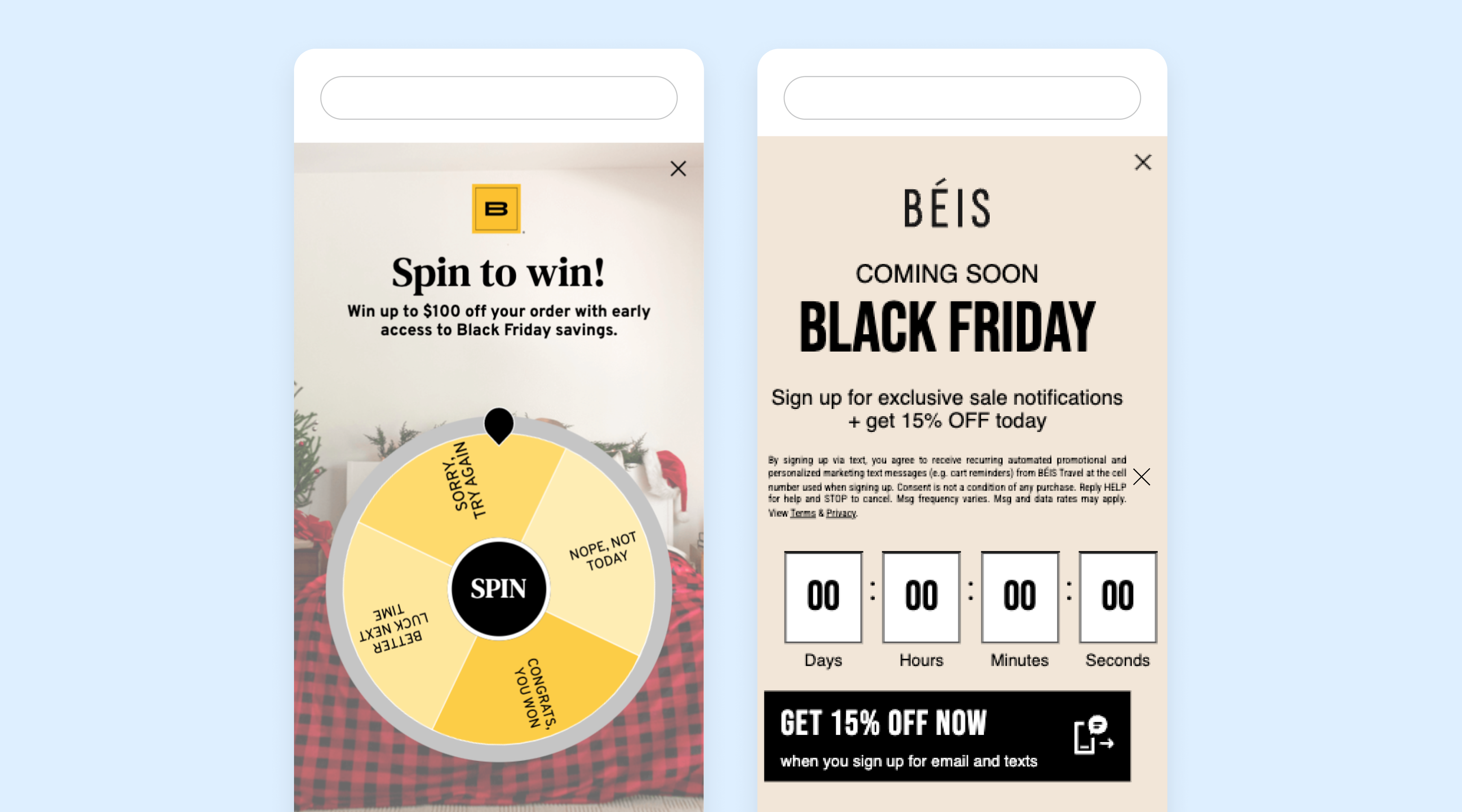
While the majority of your subscribers should be receiving all campaign messages during BFCM, retargeting certain subscribers when they’re most likely to purchase is important.
Try sending a retargeting message using our Drip Campaign feature in our Campaign Composer. Easily identify customers who have either clicked and not purchased, who didn't click at all, or who didn't open the message, specifically on email. Then have retargeting messaging ready to go as an additional effort to drive sales.
For your highest-visibility promotions, it’s an easy way to drive additional revenue that would otherwise be left on the table.
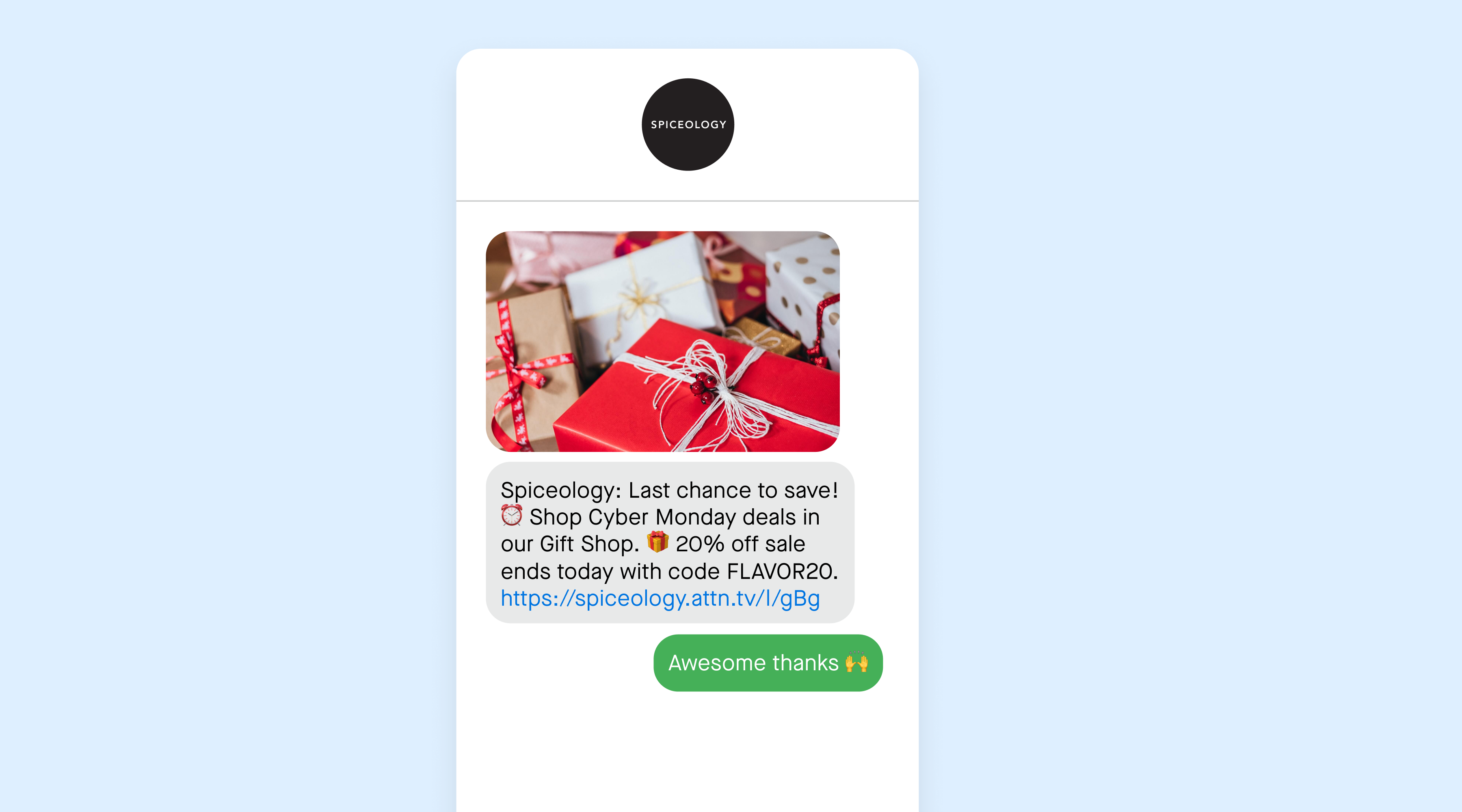
Focus on collecting both zero- and first-party data leading up to the holidays (and year-round) to get the fullest picture of who your customers are.
You’re likely already collecting first-party data through your owned channels, such as products your subscribers have browsed or purchased on your website, how they’ve engaged with your texts and emails, and more.
When collecting zero-party data, think about what information would be relevant to your strategy and what you want to achieve with it. Some of the easy ways to start collecting zero-party data ahead of the holidays include:
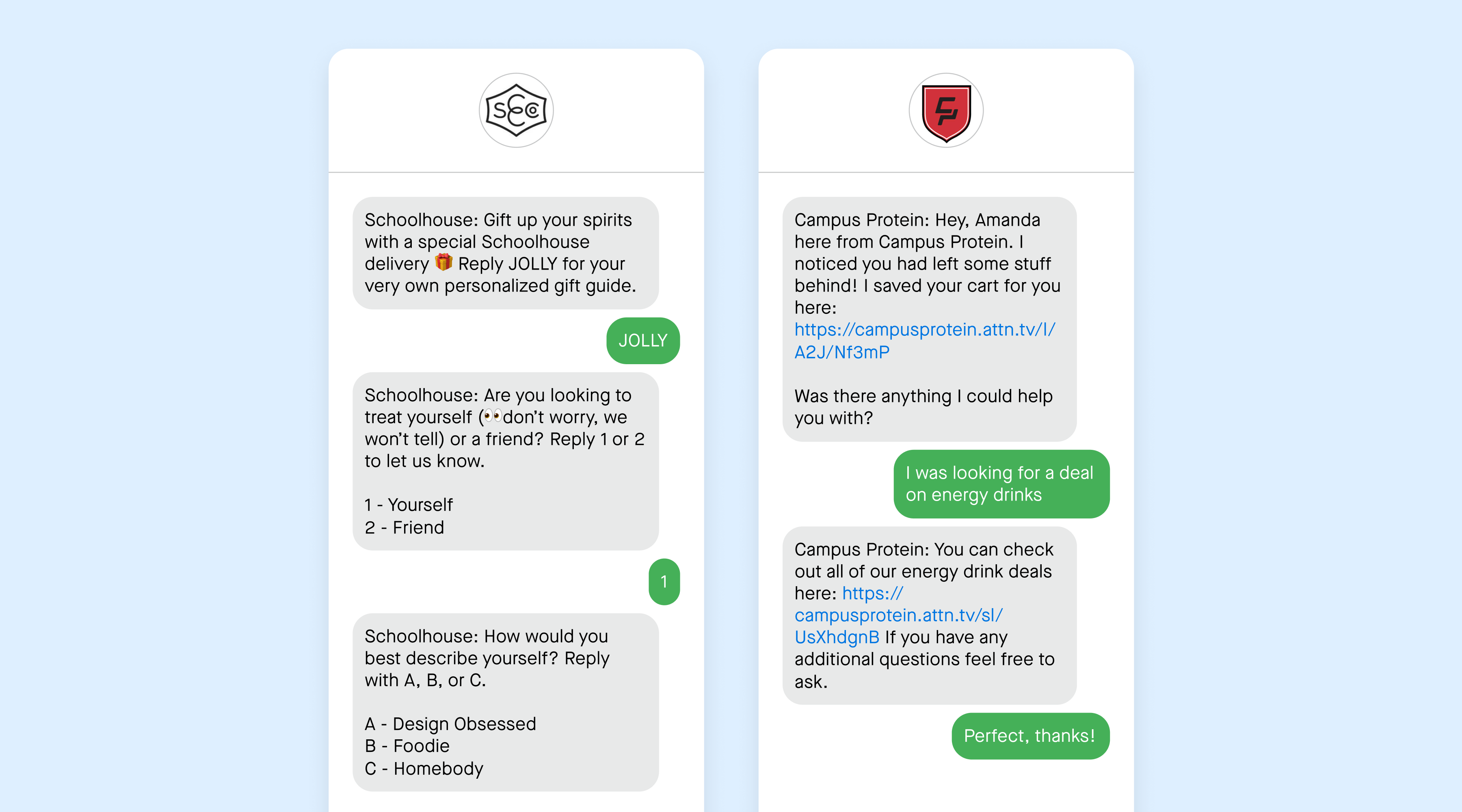
To get the most out of this type of data during the holidays, make sure you’ve connected your product catalog to your SMS and email platform so you can use that information combined with first-party data to tailor your messages (think: back-in-stock, low inventory, etc).
There are plenty of ways to use Attentive AI both before and during BFCM.
To set yourself up for success pre-BFCM, take these steps now:
During BFCM, it’s all about maximizing impact:
We’ve always known that customers who send more messages over Cyber Week tend to make more money. This year, the trend is very similar to what we saw in 2022. Brands that send more messages in November will make more money.
So how many messages should you be sending?
When planning out your SMS campaigns, a good rule of thumb is to send at least 6 BFCM-related messages. Depending on the size of your brand, a larger brand could benefit from sending upwards of 11 BFCM-related messages.
Email works a little differently. As we get closer to December, having strong email deliverability becomes increasingly important.
It's essential to gradually increase your email send volume to prevent any sudden spikes that could negatively impact deliverability. Start with your most engaged subscribers and avoid sending emails during peak times. Instead, schedule your messages during off-hours to minimize the risk of triggering spam filters.
Here’s a recommended timeline for ramping up your email campaigns:
As for Black Friday and Cyber Monday week, here’s what we recommend:
At minimum, you should have a welcome series that includes a coupon reminder and a virtual contact card (where MMS is available), browse and cart abandonment reminders, and a post-purchase flow.

If your e-commerce site is powered by Shopify (or if you’ve shared your product catalog with Attentive through our API), consider launching back-in-stock, price drop, and low inventory messages.
If you already have these automations up and running, focus on adding more strategic branching (based on product or engagement data), A/B testing timing and content, and launching a “Joined a Segment.”
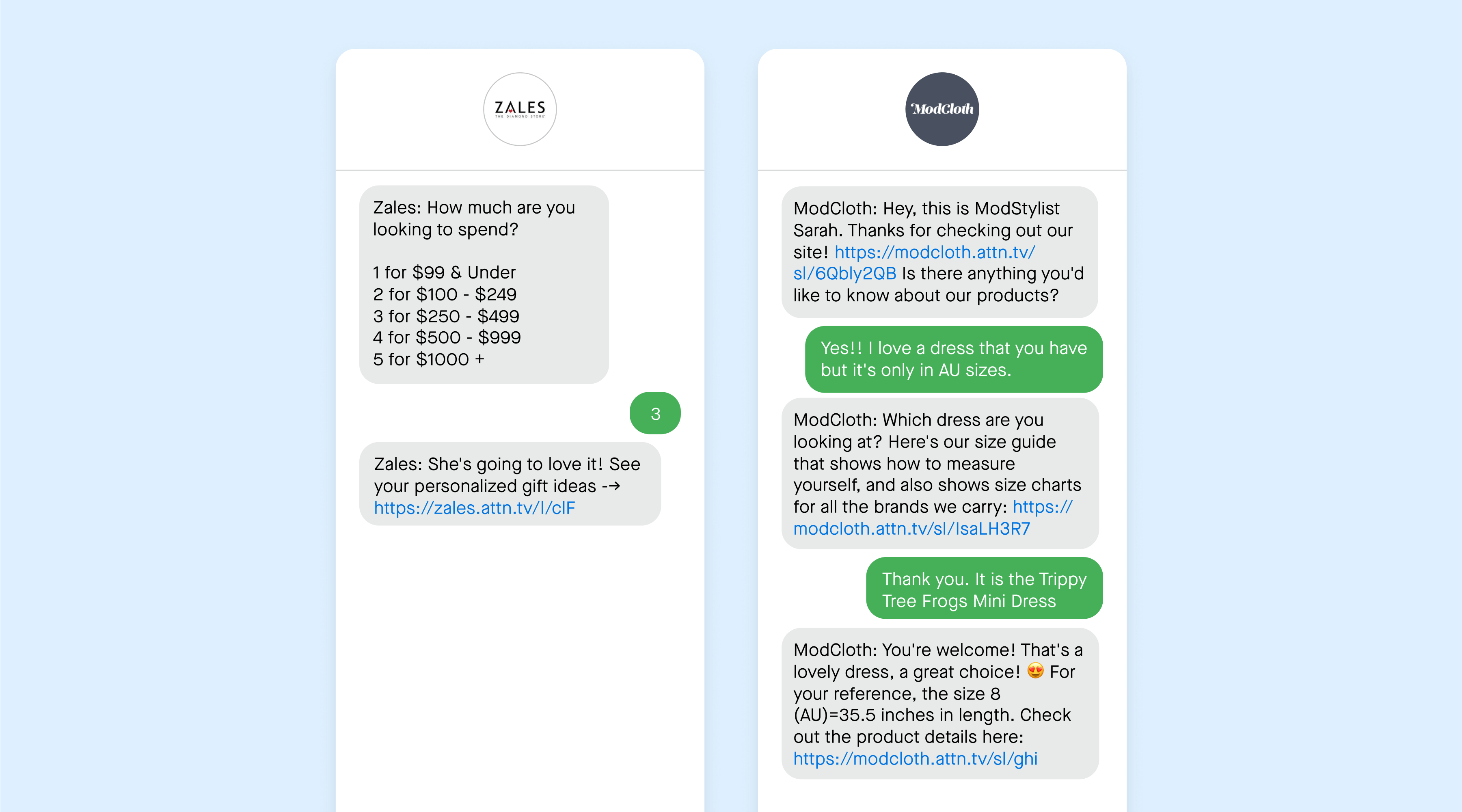
Two-Way Journeys are going to be your winners when it comes to conversational text messages. Add Two-Way Journeys to your welcome flow to start collecting data on new subscribers—like their favorite products, how often they want to hear from you, or who they’re shopping for.
Another great use case is using Two-Way Journeys to help subscribers find their new favorite product, or help recommend the perfect gift by texting them with a short quiz. It can be as simple as one question, such as “what’s your favorite style” or “what price range are you looking for” if they’re shopping for someone else.
Think about what you’re most curious to learn about, or what you’re looking to improve. If your focus is:
There are also A/B tests we specifically recommend for your email marketing program:
No matter what you choose to A/B test, keep these best practices in mind:
Opt-out rates don’t rise with increased send volume. Interestingly, we found that opt-outs during Black Friday and Cyber Monday can be helpful. They serve as a natural way to refine your list and optimize your budget.
Here’s why: We discovered that 75% of subscribers who opt out during Cyber Week have never made a purchase from that brand. The remaining 25% have typically made only one purchase, likely from their initial welcome message.
This means that when subscribers opt out during Cyber Week, you’re not losing valuable customers. Instead, you’re reclaiming your budget to focus on subscribers who are more likely to make a purchase.
First, you should be familiar with which holidays and shopping moments subscribers will be celebrating in the regions you are marketing in. For example, Boxing Day is celebrated more heavily in the UK, Canada, and Australia.
Next, consider what terms are used in other countries. While Black Friday and Cyber Monday are celebrated globally, terms like holiday have a different meaning. If you are messaging subscribers in the UK or Australia, you'd use Christmas or the festive season. It’s also good to make sure you’re promoting the appropriate seasonal items. Countries in the southern hemisphere like Australia, are kicking off summer during BFCM.
Be sure to explore our Complete BFCM Archive for more inspiration and tips for holiday success.